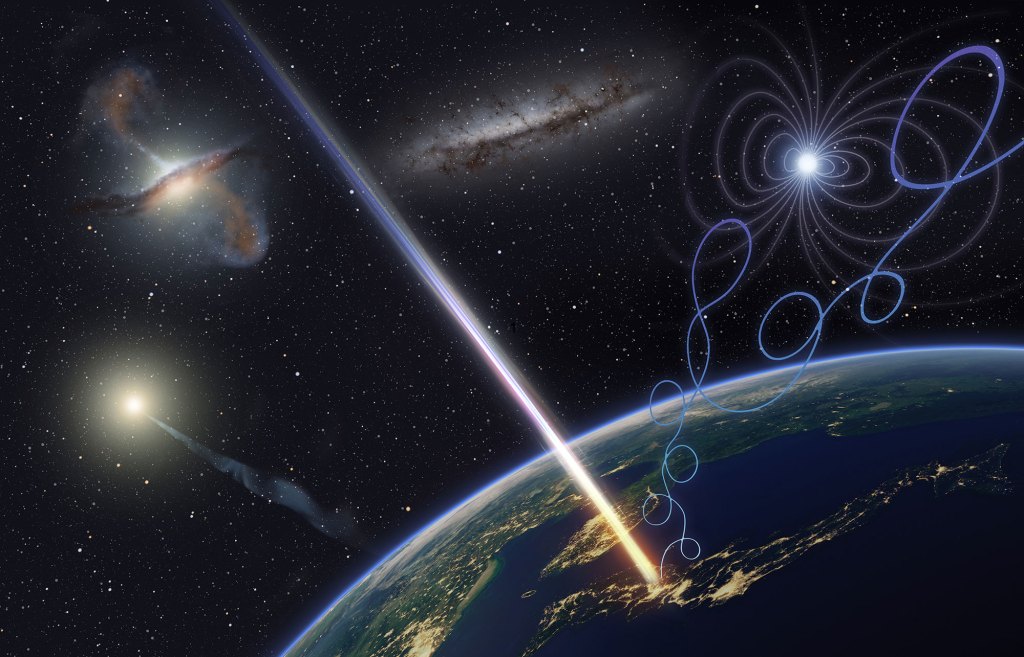Space is getting crowded. Within a decade, the number of satellites orbiting Earth might increase by five times or more, topping 10,000 by 2030. Both active satellites and defunct space junk can pose many dangers, including the risk of orbital collisions or even crashes on Earth, a problem that was recently highlighted by the uncontrolled reentry of a large Chinese rocket booster.
This busy spacescape has prompted scientists to come up with innovative ways to track orbital junk and better predict trajectories and reentries. To that end, an international team of researchers has now developed sophisticated new software to forecast one of the biggest factors influencing space debris: the Sun’s mood.
Videos by VICE
Called RESONANCE (Radio Emissions from the Sun: ONline ANalytical Computer-aided Estimator), the program uses the Sun’s radio emissions to improve upon existing models of satellite orbits, collision risks, and reentry “epochs” (the estimated orbital lifespans of objects) according to a recent study published in The Astrophysical Journal Supplement Series.
“Reliable reentry predictions require advanced atmospheric models with proper assumptions of object masses, cross sections, etc., and accurate predictions of solar activity,” said Tatiana Podladchikova, an assistant professor at the Skolkovo Institute of Science and Technology (Skoltech) and corresponding author of the study, in an email.
“Solar radio flux predictions provided by RESONANCE statistically outperform the current state-of-the-art methods in use by 16 to 67 percent,” she continued. “Thus with more accurate solar activity predictions we can provide a larger fraction of more accurately predicted reentry epochs.”
The Sun is located nearly 100 million miles from Earth, but it still greatly affects the dynamics and extent of Earth’s atmosphere, along with all the debris that is constantly passing through it. The near-Earth orbital environment is especially responsive to the whims of the solar cycle, which lasts 11 years and includes minimum and maximum periods of solar activity.
Scientists use a number of datapoints to judge when the Sun is reaching its solar maximum, including a rising number of sunspots on its surface or an increasing incidence of flares or coronal mass ejections. Solar radio wavelengths of 10.7 centimeters and 30 centimeters are also used as a handy proxy of solar activity because they are easy to capture and correlate to the Sun’s ultraviolet emission, which heats and expands Earth’s atmosphere—especially during solar maximums.
These Sun-based changes affect atmospheric drag around Earth, which is a resistance-based pressure exerted on orbital objects when they encounter denser air. As a result, spacecraft reentries peak around solar maximums because there is more atmospheric extent and therefore drag, causing objects to lose altitude faster relative to periods of low solar activity.
“The space debris reentry time closely follows the evolution of the cycle, reacting immediately to changes in solar activity,” Podladchikova said. “At the same time, payloads and rocket bodies also show a large number of reentries during the declining phase of the cycle, which may be related to the time delay between solar activity and reentry for large objects.”
Like many solar prediction methods, RESONANCE is fundamentally based on the F10.7 and F30 solar radio flux data. But Podladchikova worked with colleagues at University of Graz & the Kanzelhöhe Observatory to combine “state-of-art physics-based models and advanced data assimilation methods” to push the limits of accuracy, she said. The study is also co-authored by researchers from the European Space Agency (ESA)’s European Space Operations Centre, who provided data on payloads, rocket bodies, and space debris that re-entered from June 2006 to June 2019, so that the team could compare RESONANCE’s predictions to real reentry events.
In the end, Podladchikova and her colleagues, including lead author Elena Petrova, concluded that the “test results demonstrate that the predictions obtained by RESONANCE in general also lead to improvements in the forecasts of reentry epochs,” according to the study. The software could also be useful in efforts to prevent collisions between space debris, because atmospheric drag plays a role in the likelihood of orbital crashes, as well.
Podladchikova cautioned that predicting the majority of reentries to a high degree of accuracy—such as a location within a few thousand miles or a time period of a few hours—will most likely never be possible, even with the best models, because there are so many uncertainties involved. That said, new methods will still be able to constrain spacecraft trajectories with increasing precision.
Indeed, RESONANCE adds to a growing list of tools at the disposal of space debris experts, who are working to keep outer space safe for the future. Meanwhile, missions such as NASA’s Parker Solar Probe and ESA’s Solar Orbiter are capturing unprecedented observations about the Sun that will inform the next generation of models.
“We hope that the incorporation of the RESONANCE into the re-entry prediction tools would help to improve the re-entry prediction services,” Podladchikova concluded. “And whatever storms may rage, we wish everyone good weather in space!”




